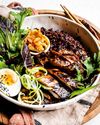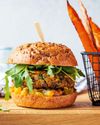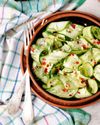
Bloating, wind and abdominal pain are commonly experienced by people who have an imbalanced gut microbiome (dysbiosis), or who have a lack of digestive enzymes and low stomach acids. Other conditions that are associated with these digestive complaints are leaky gut, irritable bowel syndrome, food allergies and intolerances, candida, SIBO (small intestinal bacterial overgrowth) and inflammatory bowel conditions (Crohn’s disease, ulcerative colitis). Whatever the cause, excessive wind in your digestive tract can be both embarrassing and distressing. Here are nine ways to help ease wind and bloating and improve your digestion.
1 . Brassica Even though brassica vegetables are extremely beneficial for your health and should be included in the diet, there are some people who need to be mindful of how they consume these super veggies. Some people experience digestive upsets like excess flatulence and bloating when they consume too many brassicas such as broccoli, cauliflower, Brussels sprouts, kale and cabbage. This is due to their high sulfur content. Sulfur is broken down in the large intestine, producing a gas called hydrogen sulfide, which can cause smelly “rotten egg” flatulence. Brassicas also contain raffinose that passes through to the large intestines undigested. Bacteria in the large intestines ferments the raffinose, and one of the byproducts of this fermentation process is excess gas, which can also contribute to bloating and flatulence.
There are a number of things you can do to make brassicas easier to digest and reduce these unwanted symptoms, such as cooking your brassicas instead of eating them raw (steaming, baking or stir-frying), making sure you chew them well, and reducing your intake at first and then slowly increasing your serving sizes.
هذه القصة مأخوذة من طبعة Issue #44 من Eat Well.
ابدأ النسخة التجريبية المجانية من Magzter GOLD لمدة 7 أيام للوصول إلى آلاف القصص المتميزة المنسقة وأكثر من 9,000 مجلة وصحيفة.
بالفعل مشترك ? تسجيل الدخول
هذه القصة مأخوذة من طبعة Issue #44 من Eat Well.
ابدأ النسخة التجريبية المجانية من Magzter GOLD لمدة 7 أيام للوصول إلى آلاف القصص المتميزة المنسقة وأكثر من 9,000 مجلة وصحيفة.
بالفعل مشترك? تسجيل الدخول

ARE YOU TO FU enough?
Love it or hate it, everyone has an opinion about tofu. Tofu is a very popular plant-based protein for vegans and vegetarians, but now this humble bean curd is starting to shine for meat lovers too as an alternative source of protein.

Sweet TRAYBAKES
Whether you want to feed a group of people or make a batch of treats for the week, traybaking is a no-fuss way to cook up something sweet and easy that will please everyone. Your family and friends will love you when you offer them some of our: cinnamon scrolls; fruity chocolate; espresso brownies; lemon & coconut slice; or ginger cake with brown butter frosting.

ROLL UP
When you roll food, whether in Lebanese bread, a thin pancake or whatever you choose, you can create a parcel of nutrition that is perfectly suited to your own tastes and needs. Here are some roll-up recipes that will suit every occasion including: mango, snow pea, & sprout rice paper rolls; oat crepes with coconut yoghurt & mixed berries; or beef meatball & tzatziki flatbreads.

RICE BOWL Lunches
If you are working from home, or even enjoying your weekend, and lunchtime rolls around but you have no plans for lunch, then a rice bowl is an ideal saviour.

PLANT-BASED PIES
Pies are a piece of gastronomic brilliance: a filling with a case and lid you can eat is food genius. The first pies date back to Egyptian times and there is a recipe for chicken pie that was carved into stone more than 4000 years ago. For millennia, however, the pie casing was mostly used to cook the filling, but for around 500 years or more we have been eating the pie crust too.

20 FOOD CRAVING HACKS
Decipher the deeper causes of your cravings and discover tricks to curtail them.

Eggplant (Solanum melongena L)
Eggplant is a wonderful option for vegans and vegetarians, extremely nutritious and highly versatile in the kitchen.

5 PANTRY SAVIOURS
Whether you're cooking a simple breakfast or something more exotic, here are five pantry food staples you should have on hand to cook plenty of delicious meals in the comfort of your own home.

Cucumber (Cucumis sativus)
Cucumbers are delicious fresh but they also offer plenty more options in the kitchen.

Our Chefs
Meet the chefs who bring this issue's recipes to you: Lisa Guy, Georgia Harding, Lee Holmes, Sammy Jones, Raquel Neofit, Naomi Sherman and Ames Starr.